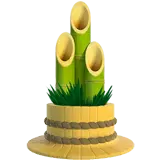Peruvian Lily Alstroemeria Inticancha White = 'Teswhitin' (PBR) (Inticancha Series)
![Peruvian lily [Inticancha White]](https://whatplantisthis.io/_next/image?url=%2F_next%2Fstatic%2Fmedia%2Fno-plant-photo.137cdfb1.webp&w=3840&q=75)
ABOUT
The Alstroemeria Inticancha White, commonly known as the Peruvian Lily or Lily of the Incas, is a striking perennial with a compact habit that features lush, green foliage as its base. The leaves are narrow and lance-shaped, creating a dense, bushy appearance. Above this verdant backdrop emerge the plant's hallmark blossoms. The flowers are known for their distinctive form and coloration. Each bloom has six petals that display a creamy white hue, merging to a soft yellow at their core. The petals are adorned with delicate flecks and streaks of complementary colors, which can include whispers of pink or light brown, giving the blooms an intricate and elegant look. The characteristic flecking patterns are unique to each flower, providing a painterly touch that enhances the plant's overall charm. The blossoms have a slight trumpet shape, with the petals flaring out from a central point, and they are held aloft on sturdy stems above the foliage, creating a delightful contrast of color and form. The Peruvian Lily is prized not only for its beauty but also for the longevity of its flowers when cut, making them a popular choice for floral arrangements. Overall, the visual appeal of the Alstroemeria Inticancha White lies in its sophisticated palette of creamy whites and subtle markings, the intricate beauty of its flowers, and the lushness of its foliage, all coming together to create a plant that is both eye-catching and elegant.
About this plant
 Names
NamesSynonyms
White Inticancha Alstroemeria, White Peruvian Lily, Inticancha White.
Common names
Alstroemeria Inticancha White = 'Teswhitin' (PBR) (Inticancha Series).
 Toxicity
ToxicityTo humans
The Alstroemeria, commonly known as Peruvian Lily or Lily of the Incas, has a low level of toxicity to humans. Ingestion can lead to mild gastrointestinal symptoms such as nausea, vomiting, or diarrhea. Handling the plant may sometimes cause skin irritation or dermatitis in sensitive individuals due to the presence of tuliposide A, a chemical compound found in the plant. It is advisable to practice caution and wear gloves when handling the plant to prevent any potential skin reactions, and ensure that plant parts are not ingested, especially by children.
To pets
The Peruvian Lily is considered mildly toxic to cats and dogs. If a pet ingests parts of this plant, they may experience mild gastrointestinal upset, which could include symptoms like vomiting or diarrhea. There is no severe toxicity reported for pets, but it is still best to keep this plant out of reach of your animals to prevent any discomfort or health issues. If you suspect your pet has ingested part of a Peruvian Lily, it is best to consult with a veterinarian.
 Characteristics
CharacteristicsLife cycle
Perennials
Foliage type
Deciduous
Color of leaves
Green
Flower color
White
Height
1-2 feet (30-60 cm)
Spread
1-2 feet (30-60 cm)
Plant type
Herb
Hardiness zones
7
Native area
South America
Benefits
 General Benefits
General Benefits- Long Blooming Period: Produces flowers for an extended time from late spring to early fall.
- Attracts Pollinators: Attracts bees, butterflies, and other beneficial insects to the garden.
- Drought Tolerant: Once established, it can handle periods of dryness with minimal watering.
- Low Maintenance: Requires minimal care beyond basic watering and occasional feeding.
- Great for Cut Flowers: Its blooms are long-lasting in vases, making it ideal for floral arrangements.
- Compact Growth: Suitable for small gardens, patios, or containers due to its manageable size.
- Cold Resistant: Capable of withstanding cooler temperatures, making it suitable for a variety of climates.
- Vibrant Flowers: Produces pure white blooms that can brighten up garden spaces.
- Versatile Planting Options: Can be planted in beds, borders, or as a part of mixed container displays.
- Hardy Perennial: Comes back year after year without the need for replanting.
 Medical Properties
Medical PropertiesThis plant is not used for medical purposes.
 Air-purifying Qualities
Air-purifying QualitiesThis plant is not specifically known for air purifying qualities.
 Other Uses
Other Uses- Photography Backgrounds: The Alstroemeria's dense clusters of white flowers make a stunning backdrop for macro and portrait photography, offering a natural, serene setting.
- Edible Flower Garnish: The petals of Alstroemeria can be used to add a splash of color and elegance to salads and desserts. Ensure they are free from pesticides before consumption.
- Gift Wrapping Embellishments: Fresh or dried Alstroemeria flowers can be used to add a personal touch to gift wrapping, complementing the wrapping paper and ribbons.
- Art Inspiration: Artists can use the striking patterns and colors of Alstroemeria flowers as a subject for paintings, drawings, and textile designs.
- Handmade Paper Inclusions: Petals and small blooms can be incorporated into handmade paper, creating a beautiful, textured floral design.
- Alstroemeria Flower Water: The flowers can be steeped in water to create a lightly fragrant Alstroemeria flower water for use in homemade cosmetics or room sprays.
- Table Centerpieces: Alstroemeria Inticancha White are often used in centerpieces for weddings, banquets, or home decor due to their long vase life and appealing aesthetics.
- Nature-Inspired Crafts: The flowers and leaves can be incorporated into nature crafts, such as making bookmarks, greeting cards or decorative wreaths.
- Culinary Infusion: The flowers can be used to infuse sugar, syrups, or vinegar with a subtle floral note for use in culinary creations.
- Flower Pressing: Alstroemeria blooms can be pressed and preserved in books or specialized flower presses, and used later for scrapbooking or decorating stationary.
Interesting Facts
 Feng Shui
Feng ShuiThe Peruvian Lily is not used in Feng Shui practice.
 Zodiac Sign Compitability
Zodiac Sign CompitabilityThe Peruvian Lily is not used in astrology practice.
 Plant Symbolism
Plant Symbolism- Friendship and Devotion: Alstroemeria, commonly known as Peruvian Lily or Lily of the Incas, is often symbolic of lasting friendships and the devotion between individuals, reflecting the flower's long-lasting nature.
- Wealth, Prosperity, and Fortune: The Peruvian Lily is also associated with wealth and success, making it an ideal gift to convey wishes of prosperity.
- Mutual Support: With its intertwined growth habit, the Peruvian Lily represents the mutual support and interdependence between people, often used to signify teamwork or a strong bond.
- Achievement of Dreams: The intricate patterns of the Peruvian Lily can symbolize achieving one's aspirations, due to the flower's aspirational growth and bloom.
- Personal Growth: The way the Peruvian Lily reaches out as it blooms is seen as a metaphor for personal growth and the continuous strive for self-improvement.
 Water
WaterThe Peruvian Lily should be watered regularly to maintain moist but not waterlogged soil, particularly during the growing season in spring and summer. A deep watering once a week, with about one to two gallons for outdoor plants or slightly less for indoor ones, often suffices, but this can vary depending on climate and weather conditions. It is important to reduce watering in the winter when the plant is not actively growing. Overwatering can lead to root rot, so ensure the pot has good drainage.
 Light
LightPeruvian Lilies thrive best in bright, indirect sunlight. An ideal spot would be in a garden that receives morning light and partial shade in the afternoon, or inside near a window with filtered light. Avoiding direct, harsh sunlight, especially during the peak hours, can prevent the leaves from scorching.
 Temperature
TemperaturePeruvian Lilies prefer temperatures between 65 to 75 degrees Fahrenheit but can tolerate a range from approximately 50 to 80 degrees Fahrenheit. Avoid exposure to temperatures below 50 degrees Fahrenheit, as frost can damage the plant. Maintaining an even temperature within their preferred range promotes healthy growth and flowering.
 Pruning
PruningPruning Peruvian Lilies is essential for promoting vigorous growth and can encourage more blooms. Deadhead spent flowers regularly to elongate the blooming period and cut back the foliage by one-third after flowering ceases. Prune in the late winter or early spring before new growth begins for the best results.
 Cleaning
CleaningAs needed
 Soil
SoilThe Princess Lily requires a well-draining soil mix with equal parts potting soil, peat, and sand or perlite. A slightly acidic to neutral pH of 6.0 to 7.0 is ideal for optimal growth.
 Repotting
RepottingPrincess Lilies should be repotted every two to three years to replenish the soil and accommodate root growth.
 Humidity & Misting
Humidity & MistingPrincess Lilies prefer moderate humidity levels around 40% to 60%, avoiding overly dry or extremely moist conditions.
 Suitable locations
Suitable locationsIndoor
Ensure bright, indirect light, proper watering, and good air circulation.
Outdoor
Plant in partial shade, protect from harsh sun, and ensure well-drained soil.
Hardiness zone
7-10 USDA
 Life cycle
Life cycleAlstroemeria Inticancha White, also known as Peruvian lily or lily of the Incas, begins its life cycle as a cluster of tuberous rhizomes. Upon sprouting, the plant produces linear, lance-shaped leaves and erect stems that will eventually bear the signature trumpet-shaped, white flowers with contrasting streaks or flecks. After pollination, which is often facilitated by insects, the flowers develop into capsule-like fruits that release seeds when mature. These seeds can germinate to produce new plants if the environmental conditions are suitable. Peruvian lilies experience a period of dormancy, typically during colder months, where above-ground growth dies back and the plant's energy is conserved in the underground tubers. With the arrival of favorable growing conditions, such as spring or early summer warmth, the plant re-emerges, continuing its perennial cycle.
 Propogation
PropogationPropogation time
Spring to Summer
Alstroemeria, also known as the Peruvian Lily or Lily of the Incas, can be propagated most commonly through division. The best time to propagate the Alstroemeria Inticancha White by division is in late winter or early spring before the plants begin their active growing season. To propagate by division, carefully lift the plant from the soil, and using a sharp knife or spade, divide the tuberous root clump into two or more sections, ensuring that each section has at least one growth bud or shoot. Replant the divisions immediately, placing them at the same soil depth as before, approximately 6 to 8 inches (15 to 20 centimeters) apart to allow room for growth. Water the newly planted divisions thoroughly to settle the soil around the roots and to encourage the establishment of the Peruvian Lily.
